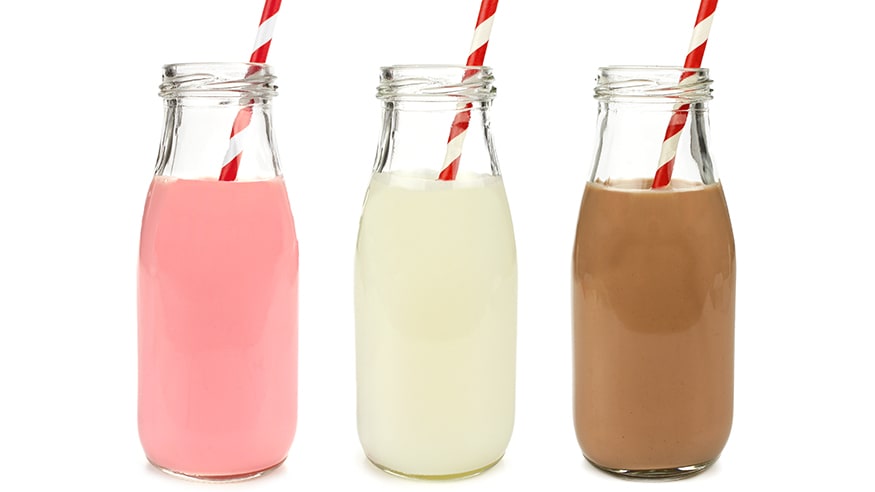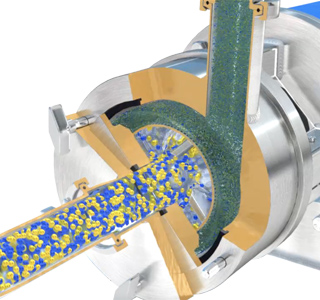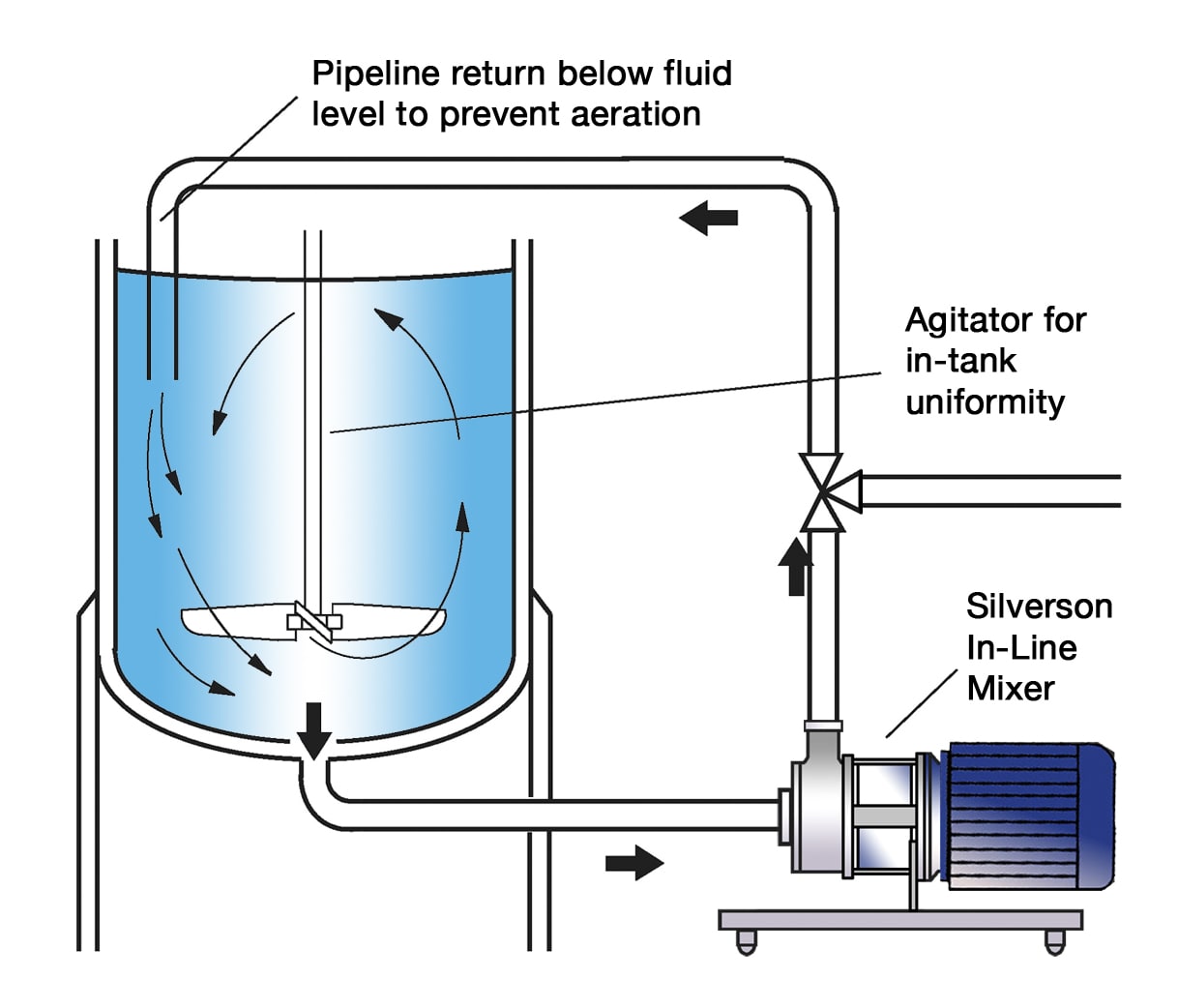Production of Flavoured Milk Drinks
Flavoured milk drinks are available in many varieties. Viscosities range from that of whole milk, to “thick milkshake” products which achieve their viscosity through use of thickening additives, sometimes in combination with freezing. Yoghurt drinks are similar in composition, but are processed differently and are not covered in this report. Milk ingredients are also used in smoothies to add texture and interest. Find out more about the Manufacture of Smoothies.
Non-dairy/dairy-free milks are covered in a separate report.

The Process
A typical mix would be prepared in the following manner:
- Liquid ingredients are weighed/metered into the process vessel. Heating follows to aid dissolving/hydration of subsequent ingredients.
- Powdered ingredients - skim milk powder, sugars, etc. are added to the liquid and mixed until dispersed.
- Stabilisers and emulsifiers are added. These may be dry premixed with other ingredients, e.g. sugar, to reduce agglomeration and “weight” the powder to aid incorporation into the liquid.
- Flavour and colouring may be added at this stage.
- The mix is homogenised, usually by passing through a high pressure homogeniser.
Subsequent processing varies according to the type of product:
- Some “thick milkshakes” are frozen at point of sale.
- Short shelf life products are pasteurised, typically in a continuous plate heat exchanger before cooling, bottling and then storage at 2 - 4℃ (35 - 40℉).
- Long life products are sterilised at around 140℃ (285℉), then packed under aspectic conditions, usually in Tetrapak® type cartons, or plastic bottles.
- Sterilised milk products are heated to around 135℃ (275℉), then cooled to 60℃ (140℉) before being filled into bottles. These are sterilised after being hermetically sealed.
In most countries, legislation covers the composition and labelling of these products. These regulations restrict the use of certain ingredients and specify minimum content of fat and total solids.
Ingredient |
Typical % |
Function |
|---|---|---|
| Milk Fat | 0 - 3.5. 1% is typical | Fat adds body and mouthfeel. Lower fat contents are more refreshing and suited to fruit flavours. Chocolate works better in higher fat formulations. A blend of milks is used to give a particular fat content. |
| Sugar | 4-6 | Various sugars, syrups and artificial sweetener blends is used. Chocolate milks are usually formulated with higher sugar/sweetener content. |
| Flavour | 0.1 | Many different flavours are possible, the most common being banana, strawberry and chocolate. The use of flavourings is controlled by legislation in many countries. Both natural and synthetic flavours are used. |
| Colour | 0.1 | Liquid colours are added to strawberry milks. Choice of colour is determined by processing conditions, and may be affected by legislation. |
| Stabiliser | 0.1 - 0.3 | Stabilisers enhance body and viscosity as required. A blend of products is used to obtain a range of properties. Stabilisers used include guar, locust bean gum, carrageenan, xanthan gum and pectin. |
| Emulsifier | 0.2 | This maintains small fat globules and so reduces the tendency of the fat to rise in long-term storage. The emulsifier also affects creamy texture or "mouthfeel." |
| Cocoa | 1 | Adds colour and flavour to chocolate drinks. Usually fat reduced cocoas at 10 - 12% fat are used. Other flavours such as vanilla can be added to "round out" the chocolate flavour. |
| Cocoa stabiliser | 0.2 | Cocoa is insoluble and has to be held in suspension to prevent the drink from separating into a dark cocoa sediment under a white milk. Typically carrageenan is used for this. |
The Problem
The process is subject to a number of problems when using agitators and conventional powder/liquid blending systems:
- The powders are very cohesive and must be added at a controlled rate to reduce agglomeration of particles.
- Premixing of powders increases labour costs and process time.
- Stabilising and emulsifying agents have a strong tendency to agglomerate and require special handling.
- Poor dispersion can lead to clusters of partially hydrated material building up on the walls of the heat exchanger, impairing heat transfer.
- Incomplete hydration also reduces yield of raw materials.
- Long processing times are required to complete dispersion and achieve a satisfactory consistency.
- Potential full yield of stabilisers is difficult to obtain using traditional methods.
- Many formulations contain unnecessarily high levels of these raw materials to compensate for poor yield and wastage.
The Solution
The above problems can be overcome by using a Silverson High Shear mixer. Operation is as follows:

Stage 1
The high speed rotation of the rotor blades creates a powerful suction which draws the liquid and solid/powdered ingredients into the workhead.

Stage 2
The materials are subjected to intense shear in the confined area of the workhead. Agglomerates are broken down in the gap between the rotor blades and stator wall. A lump-free mixture is rapidly obtained.

Stage 3
The product is forced out of the stator as fresh material is drawn into the workhead. A circulatory mixing cycle develops in which all the material passes through the Silverson workhead.
-
Stage 1

Stage 1
The high speed rotation of the rotor blades creates a powerful suction which draws the liquid and solid/powdered ingredients into the workhead.
-
Stage 2

Stage 2
The materials are subjected to intense shear in the confined area of the workhead. Agglomerates are broken down in the gap between the rotor blades and stator wall. A lump-free mixture is rapidly obtained.
-
Stage 3

Stage 3
The product is forced out of the stator as fresh material is drawn into the workhead. A circulatory mixing cycle develops in which all the material passes through the Silverson workhead.
The Advantages
- Premixing of powdered ingredients is not necessary.
- Agglomerate-free mix.
- Stable emulsion.
- Rapid mixing times.
- Maximised yield of raw materials as thickening agents are fully hydrated and other ingredients are properly dispersed.
The batch size, formulation, type of ingredients and the viscosity of the mix dictates which machine from the Silverson product line is best suited to individual processing requirements:
Silverson Flashmix
- Ideal for larger batches
- Capable of rapidly incorporating large volumes of powders
- Minimised aeration
- Powders can be added without the need for pre-mixing
- Can be fitted with additional small hopper for dosing small volume liquid ingredients
- Suitable for higher viscosity mixes
- Suitable for operation at higher temperatures
- Minimised cleaning requirements
- Controlled powder addition rate
- Minimum operator input required
High Shear In-Line Mixers
- Ideal for larger batches
- Easily retrofitted to existing plant
- Must be used in conjunction with an efficient in-tank agitator to wet out powder
- Aeration free
- Self-pumping
- Can be used to discharge vessel
- Ultra Hygienic models available
High Shear Batch Mixers
- Suitable for batches up to 1000 litres
- Can be used on mobile floor stands
- Can easily be moved from vessel to vessel


